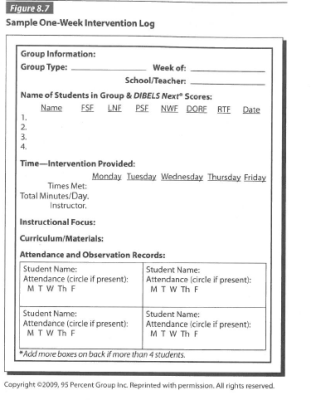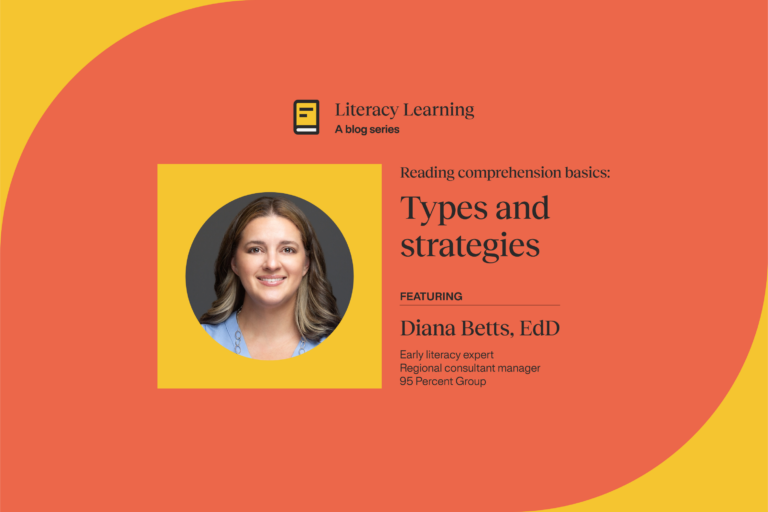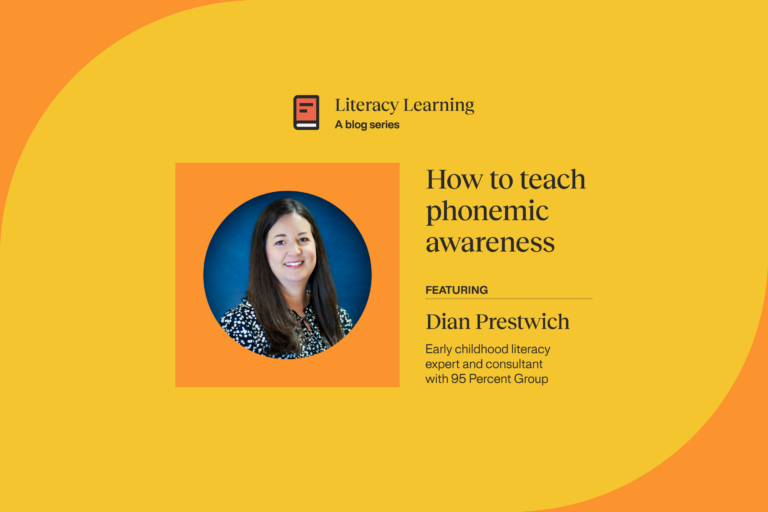Classroom Reading Intervention Activities
Deciding how to introduce Reading Intervention Activities in your classroom is vital to your students’ success. This brief post will walk you through the steps to implement successful small group reading intervention activities—including how to use progress monitoring data and an intervention log—to help struggling readers to become strong readers.

Okay, so you’ve just thoroughly screened your students and collected data indicating that several of your kiddos show skill deficits and are at risk for not exiting on grade level. What’s next? It’s time to implement small group reading intervention activities.
In the book, I’ve DIBEL’d, Now What? author and 95 Percent Group co-founder Susan Hall, Ed.D. advocates that reading intervention activities begin “at the lowest skill that is deficient and address this skill before moving up the continuum.” She continues, “The most efficient and effective way to determine where to start intervention instruction is to place the student in a group to master a specific skill along a phonological awareness or phonics continuum.”
What do Reading Intervention Activities look like in the Classroom?
Reading intervention activities are an excellent source of practice opportunities after the teacher has delivered explicit instruction. They can be added into a 30-minute intervention block and should be engaging, active, fun and playful. Reading intervention activities have a clearly defined purpose and can also be used whole class as well to support the core curriculum.
Categories of Reading Intervention Activities
For schools using DIBELS, Reading Intervention Activities can be grouped into 7 categories:
- Letter Naming Fluency
- First Sound Fluency
- Phoneme Segmentation Fluency
- Nonsense Word Fluency
- DIBELS Oral Reading Fluency
- Comprehension
- Vocabulary
Reading intervention activities should be repeated three days in a row rotating through a limited set of activities—so that more time is spent on intervention and less on teaching new activity routines. You can download our complimentary Reading Intervention resource and use this as a guideline to help your students get practice opportunities to meet critical milestones.
How do I use Progress Monitoring Data to Implement Reading Intervention Activities?
In addition to your BOY, MOY and EOY diagnostic assessments, progress monitoring is required to carefully observe students while they are receiving intervention instruction. Keeping a close eye on this group helps teachers determine if students are making adequate progress or if additional intervention is required to achieve grade level success.
Students in intervention groups should be assessed every three weeks from the initial benchmark to measure progress over a nine week period. The data collected will show how well the interventions are going or if more intense instruction is required. Progress monitoring can be done more frequently, on a case-by-case basis, for students who respond more slowly to intervention. Students who show skill mastery can be exited from intervention group and moved back to core instruction.

Planning and Taking Notes: Keys to Reading Intervention Activities Success
Time really flies during the daily reading block and there is a lot of movement throughout the classroom as you meet with your intervention and guided reading groups. Planning is the key to success and it’s important to include documentation about the types of practice materials used in the intervention and the intensity level in your lesson plans. This information should be compiled and kept on hand to review with your reading specialist or other campus leader to make informative decisions about changing intervention strategies for individual students.
Teachers should also maintain an intervention log. This resource gives educators a way to keep anecdotal notes, while meeting in small groups, about student attentiveness, attendance, skill progress, and difficulties. It’s important to save this data and to share with your reading specialists and administrators as necessary to review the intervention process and to improve student success. If a student receives intervention outside the classroom, this resource can be shared to keep teachers informed about intervention instruction for each student.
In our many years of teacher observation, we’ve identified how we can help improve Reading Intervention Activities at your campus. Click to learn the 6 most effective characteristics of intervention instruction.
About 95 Percent Group
95 Percent Group is an education company whose mission is to build on science to empower teachers—supplying the knowledge, resources, and support they need—to develop strong readers. Using an approach that is based in structured literacy, the company’s One95 literacy ecosystem integrates professional learning and evidence-based literacy products into one cohesive system that supports consistent instructional routines across tiers and is proven and trusted to help students close skill gaps and read fluently. 95 Percent Group is also committed to advancing research, best practices, and thought leadership on the science of reading more broadly. For additional information on 95 Percent Group, visit: https://www.95percentgroup.com.



